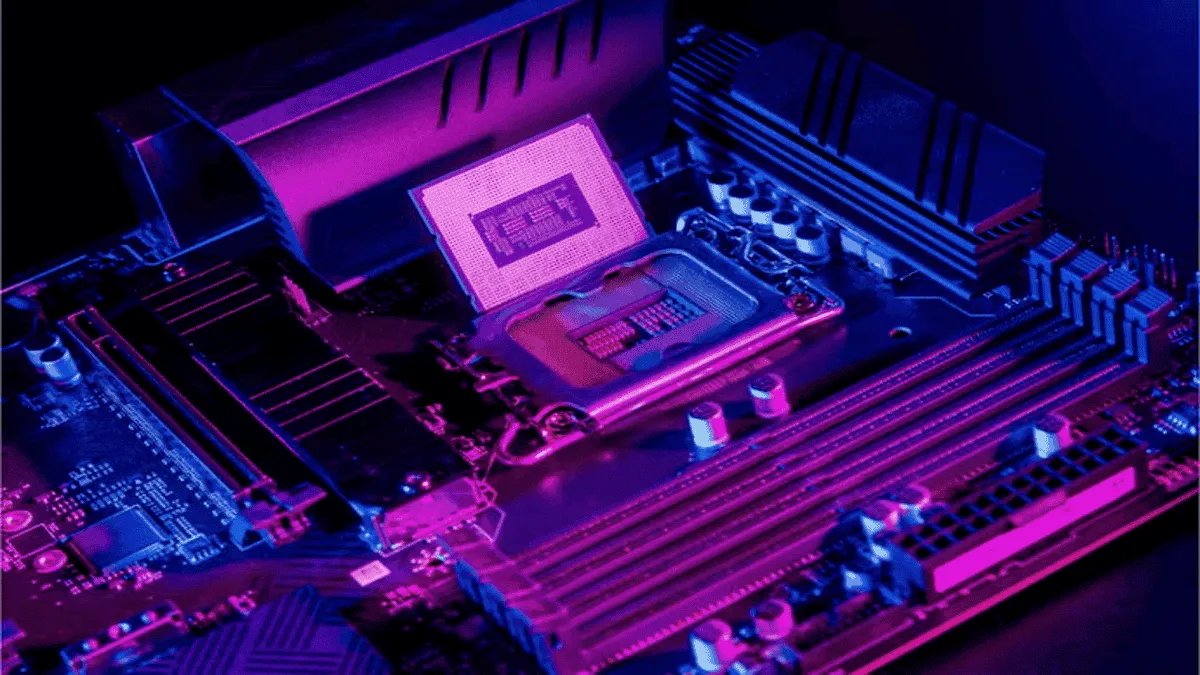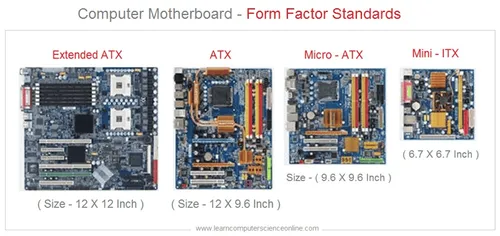
The motherboard is arguably the most crucial component within your PC, as the backbone that connects and allows communication between all other parts. Its design and specifications dictate your entire system's compatibility and performance potential. Knowing your motherboard's exact model is essential for several reasons.
Firstly, when building a new PC, understanding your motherboard's capabilities ensures you choose compatible components, such as the CPU, RAM, and GPU, that will work seamlessly together. The motherboard's chipset, socket type, and form factor are key elements that must align with your chosen hardware. Moreover, knowing your motherboard model helps determine the maximum potential upgrades. Suppose you plan to upgrade your existing computer. For instance, some motherboards support only certain generations of processors or specific types and speeds of memory. Upgrading without this knowledge could lead to compatibility issues or suboptimal performance.
Lastly, keeping your drivers up-to-date is vital for maintaining system stability and performance. Some Motherboard manufacturers frequently release driver updates to address bugs. Updates also come to improve compatibility with new hardware. Therefore, Knowing your motherboard model lets you easily access the correct drivers and ensure your system runs smoothly.
In summary, the motherboard is a pivotal component that influences your PC's hardware compatibility, upgrade potential, and overall performance. Understanding its specifications and model is essential for anyone looking to build, upgrade, or maintain their computer effectively.

Motherboard Types
Nowadays, PC Motherboards are split into various types and form factors. Each features a distinct design to cater to different needs and preferences. Here are some of the most common types of motherboards for PCs:
-
ATX (Advanced Technology eXtended)
- Description: The ATX is the most prevalent motherboard form factor, offering a balanced mix of size, expansion capabilities, and performance.
- Size: Typically 12 x 9.6 inches (305 x 244 mm).
- Features: Multiple expansion slots for GPUs, ample RAM slots, numerous USB ports, and various connectivity options.
- Use Cases: Ideal for gaming PCs, high-performance desktops, and general-purpose systems.
-
MicroATX (mATX)
- Description: Slightly smaller than ATX, MicroATX motherboards provide a good balance between expandability and compactness.
- Size: Typically 9.6 x 9.6 inches (244 x 244 mm).
- Features: Fewer expansion slots than ATX but still sufficient for most users, adequate RAM slots, and essential connectivity options.
- Use Cases: Suitable for mid-range gaming builds, office computers, and budget-conscious setups.
-
Mini-ITX
- Description: Mini-ITX motherboards are compact and designed for small form factor (SFF) builds.
- Size: Typically 6.7 x 6.7 inches (170 x 170 mm).
- Features: Limited expansion slots (usually one PCIe slot), fewer RAM slots, and compact connectivity options.
- Use Cases: Perfect for HTPCs (Home Theater PCs), compact gaming rigs, and portable systems.
-
E-ATX (Extended ATX)
- Description: E-ATX motherboards are larger than standard ATX boards, providing more room for additional features and components.
- Size: Typically 12 x 13 inches (305 x 330 mm).
- Features: Extra PCIe slots, more RAM slots, enhanced power delivery for high-end CPUs, and advanced connectivity.
- Use Cases: Ideal for enthusiast builds, high-end gaming PCs, and professional workstations requiring extensive resources.
-
FlexATX
- Description: FlexATX is a variation of the ATX standard, designed to offer more flexibility in smaller cases.
- Size: Typically 9 x 7.5 inches (229 x 191 mm).
- Features: Compact design with limited expansion and connectivity options.
- Use Cases: Suitable for small desktop systems and space-constrained environments.
-
Mini-STX
- Description: Mini-STX (Mini Socket Technology Extended) is an even smaller form factor than Mini-ITX, aimed at ultra-compact builds.
- Size: Typically 5.5 x 5.8 inches (140 x 147 mm).
- Features: Very limited expansion, often integrated components, and minimal connectivity.
- Use Cases: Best for ultra-compact PCs, digital signage, and other specialized small-scale applications.

Each of these motherboard types caters to different needs, from full-sized gaming rigs to compact home theater systems, ensuring a suitable option for every PC build. Understanding these form factors helps select the right motherboard for your specific requirements, balancing size, expandability, and performance. Now that you know the different types of Motherboards, let's learn how to identify the motherboards you have on your PC.
Check with System Info
This is the easiest way to check your motherboard model:
-
Access System Information:
- Windows Search: Type "System Information" and press Enter.
- Control Panel: Go to Control Panel > System and Security > Windows Tools > System Information.
- Run Command: Press Windows + R, type
msinfo32, and click OK.
-
Find Your Motherboard Model:
- Look for "Baseboard Manufacturer" for the company name.
- Look for "Baseboard Product" for the model number.
This should give you all the information you need. If not, there are other methods to try.
Check with Third-Party Software
Using third-party software is a quick and easy way to check your motherboard model. Popular tools include HWiNFO and CPU-Z, which also offer additional features for monitoring system performance and temperatures.
Step 1: Download and Install
- Choose Your Software: For this guide, we'll use HWiNFO, but CPU-Z is also a good option. Both are free.
- Download: You can download a portable version (no installation needed) or a regular install version of HWiNFO. Both work fine.

Step 2: Launch the Program
- Open HWiNFO: After downloading, launch HWiNFO. You'll see two windows: the System Summary and the main HWiNFO window.
- Find Motherboard Information:
- In the System Summary window, look in the middle section labeled "Motherboard" to find the manufacturer, model, and chipset.
- In the main HWiNFO window, click on the "Motherboard" option on the left-hand side for a detailed overview.
These tools provide a wealth of information beyond just the motherboard details, such as CPU temperature and power consumption, so feel free to explore their features.
Check with Command Prompt
Using the Command Prompt to check your motherboard model is a straightforward and quick method. Here's how to do it:
Step 1: Open Command Prompt
- Search: Type "Command Prompt" into the Windows Search bar.
- Run as Administrator: Right-click on Command Prompt and select "Run as administrator."
Step 2: Enter the Command
- Type or Copy-Paste: Enter the following command:
wmic baseboard get product, Manufacturer
- Press Enter: This command will display your motherboard's manufacturer and model.
This method provides the necessary information quickly, similar to the System Information tool.
Check with PowerShell
Using Windows PowerShell to check your motherboard model is a swift and efficient process. Here's how you can do it:
Step 1: Open PowerShell
- Search: Type "PowerShell" into the Windows Search bar.
- Run as Administrator: Right-click on Windows PowerShell and select "Run as administrator."
Step 2: Enter the Command
- Paste the Command: Copy and paste the following command into the PowerShell window:
Get-WmiObject Win32_BaseBoard | Format-Table –Auto Manufacturer,Product, SerialNumber,Version
- Press Enter: Running this command will display information about your motherboard, including the manufacturer and product model.
While PowerShell may provide additional information, focus on the details under "Manufacturer" and "Product" to identify your motherboard model swiftly.
Opening Up the Case
If you're unable to determine your motherboard model using software methods, your final option is to physically inspect the motherboard inside your desktop PC. Here's how to do it:
- Desktop Owners:
- Precaution: Check your warranty terms before proceeding, as some warranties may be voided if the case is opened.
- Steps:
- Shut down your computer and disconnect all cables.
- Remove the side panel of your desktop case. This may involve unscrewing screws or pressing release buttons, depending on your case design.
- Once the case is open, locate the motherboard. It's the large circuit board to which most components are connected.
- Look for any markings or labels on the motherboard that indicate the manufacturer and model number.
- Note down the information and reassemble your computer.
It is worth noting that Laptop users should stick with the other methods listed above. Also, if you can identify your laptop, it's pretty easy to search and learn everything about your device. We don't recommend you disassemble it because you will hardly find any information on a notebook's motherboard.

Conclusion
In summary, identifying your motherboard model is crucial for ensuring hardware compatibility and performing system upgrades. You have several methods to check it, from software-based solutions to physically inspecting your desktop PC. Choose the method that suits you best, and always consider warranty implications before opening your case. Knowing your motherboard model empowers you to make informed decisions about your computer's maintenance and upgrades, ultimately optimizing its performance.
Popular News
Latest News
Loading

